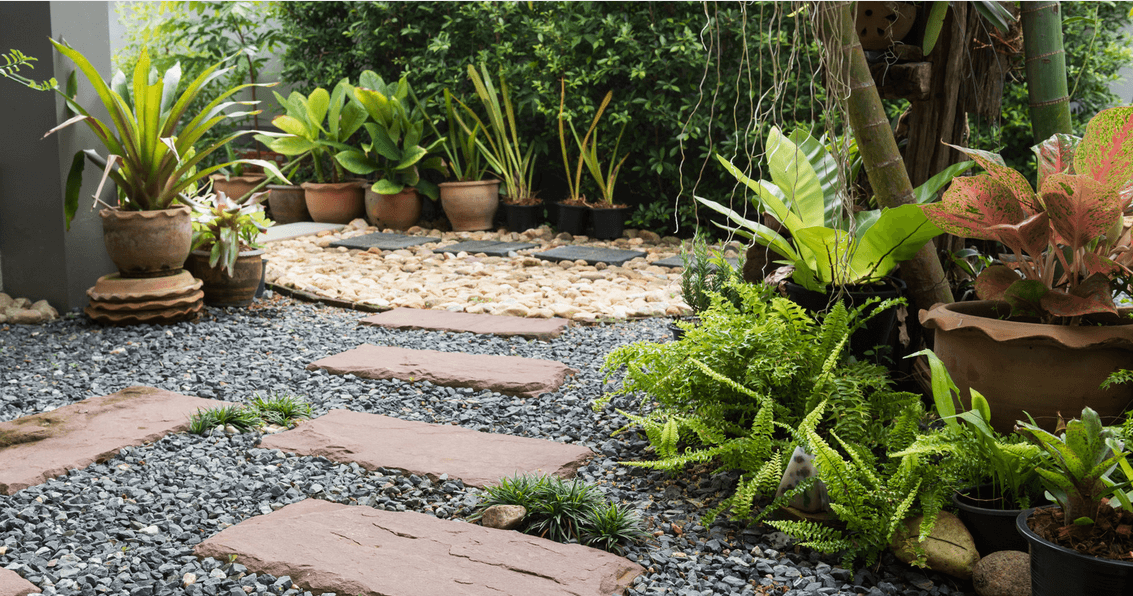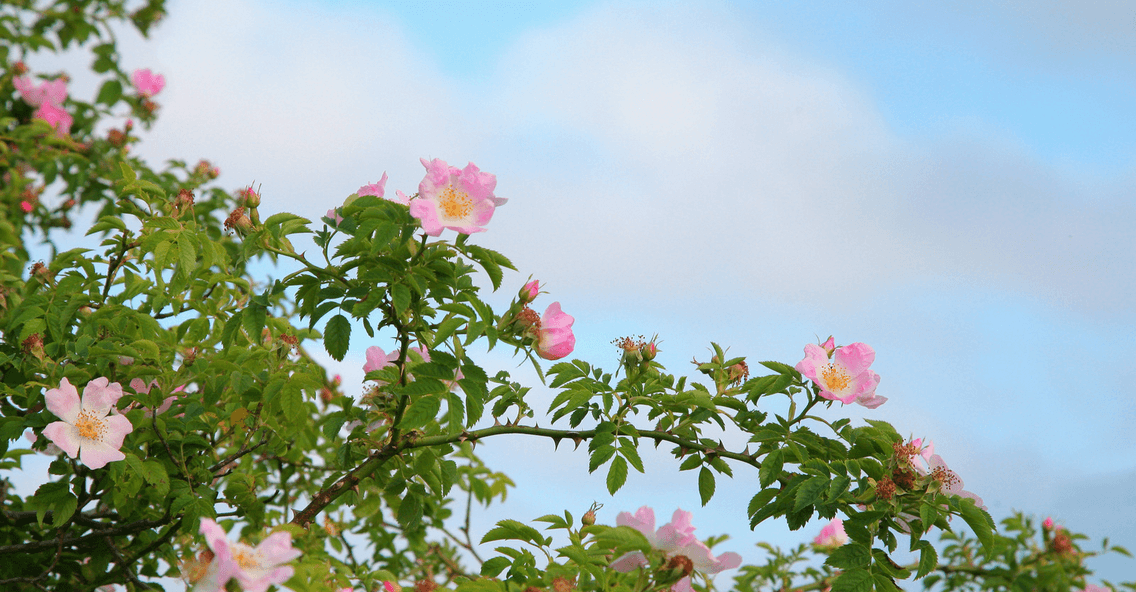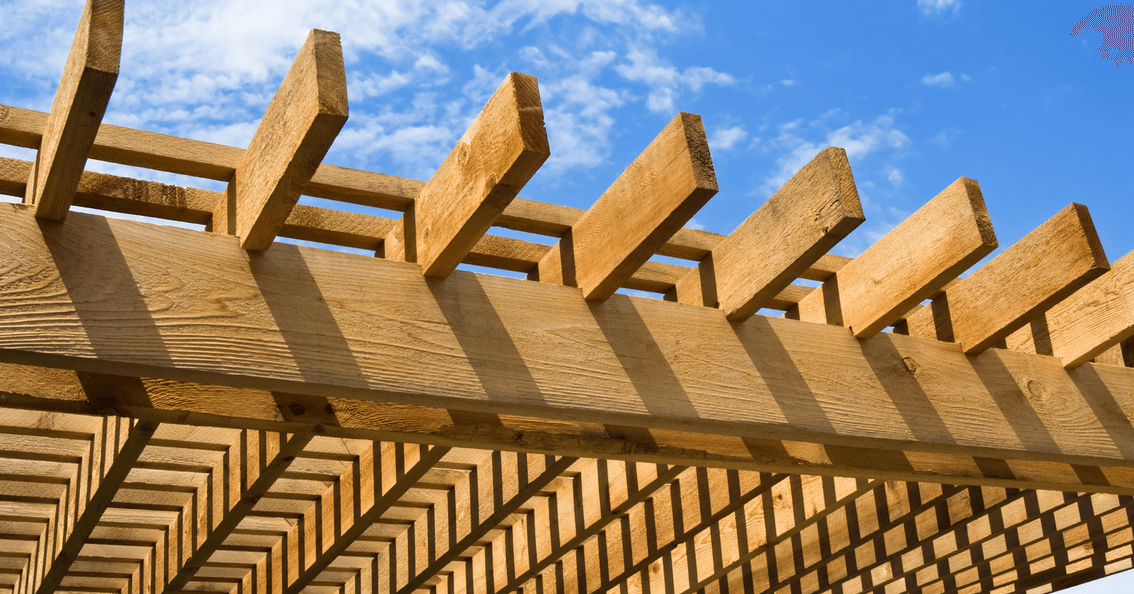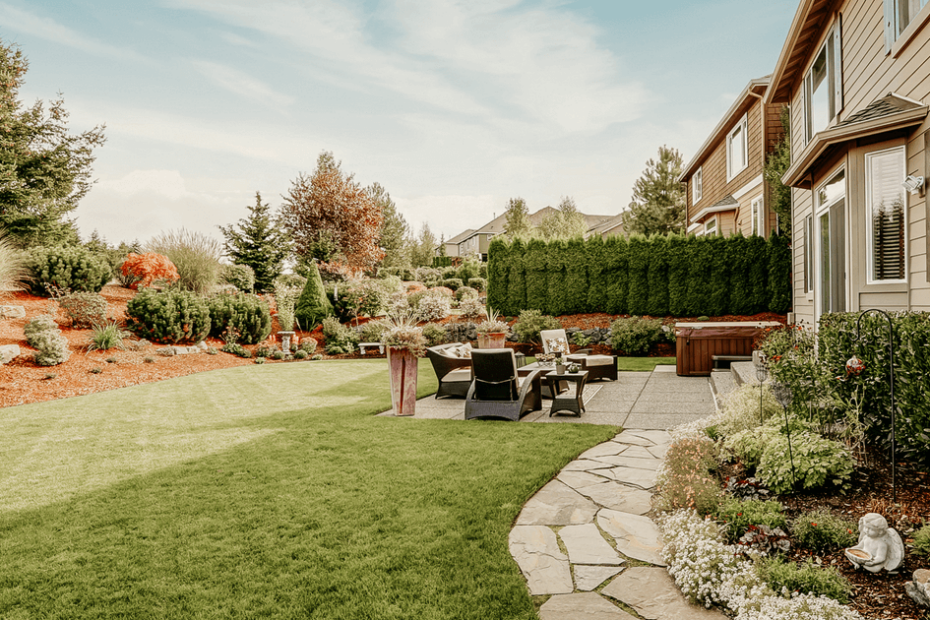Welcome to a new age of outdoor aesthetics as we unveil the most innovative and stylish garden and landscaping trends that will take center stage in 2024. Living in Alberta’s vibrant and ever-changing landscape, we understand the importance of reinventing your outdoor spaces to reflect your style and harmonize with our unique environmental conditions. From sustainable garden practices to using local flora and modern design elements, we explore the landscaping trends to redefine our yards and spaces. Let’s embark on this journey to discover and draw inspiration for your next landscaping project in 2024.
Yard Renovations and Restorations
Exploring the Latest Garden and Landscaping Trends in Yard Makeovers
Yard renovations are increasingly leaning towards clean, minimalist designs that are both stylish and low maintenance. Improved outdoor lighting systems, multifunctional furniture, and adding artistic elements to your outdoor space are all trending. The use of local, drought-tolerant plants is also rising, reflecting a movement towards more sustainable and climate-adapted gardens.
Benefits of Yard Renovation and Restoration
- Yard renovations can significantly increase the value of your property. A well-designed and maintained landscape can add as much as 20% to the total value of a home.
- The restoration and renovation of a yard can enhance its usability. Proper landscaping can transform underutilized spaces into functional areas for relaxation or entertainment.
- Yard renovations contribute to the local ecosystem. Using native plants and sustainable practices, your yard can become a supportive habitat for local fauna.
- Yard restorations can help conserve water and reduce maintenance costs by incorporating drought-tolerant plants and intelligent irrigation systems.
Yard Renovations to Reflect Modern Styles
Given the diverse range of modern styles and individual preferences, yard renovations in 2024 will strongly emphasize personalization. Landscape designers focus on creating outdoor spaces that reflect the client’s lifestyle and aesthetic preferences, all while incorporating elements of the latest design trends. Whether you prefer a minimalist, modern design or a bohemian, lush green space, rest assured that your renovated yard will genuinely reflect your unique style.
Zen Gardens: A Touch of Tranquility
Increasing Popularity of Zen Gardens for Creating Peaceful Outdoor Retreats
In the hustle and bustle of our modern lives, Zen gardens are gaining popularity as tranquil havens that offer a respite from the outside world’s noise. Inspired by traditional Japanese design, these minimalist landscapes appeal to their simplicity, beauty, and tranquillity. With their careful arrangements of rocks, gravel, and occasionally sparse vegetation, Zen gardens are designed to foster introspection and relaxation, making them a perfect choice for those seeking a peaceful retreat in their backyards.
The Popularity and Growing Interest in Wellness and Health
The increasing interest in personal wellness and health further propels Zen gardens’ popularity. These serene spaces provide an ideal environment for activities that promote mental well-being, such as meditation and yoga. Immersed in the calming ambience of a Zen garden, individuals can engage in these practices with fewer distractions, thereby facilitating a deeper connection with their inner selves. Tending to a Zen garden is also considered a form of meditation, making these gardens an alluring choice for those seeking a holistic approach to wellness.
Design Ideas that Incorporate Traditional Zen Elements
While traditional Zen gardens are typically devoid of vibrant flora, modern interpretations are bending these rules to incorporate elements of personal preference and local climate. The strategic placement of moss, succulents, or small trees can bring life to these minimalist landscapes without compromising their tranquillity. Similarly, using modern materials such as glass and metal to create Zen-inspired sculptures and water features is an emerging trend. Modern Zen gardens may also include seating areas or yoga platforms, ensuring functionality aligns with aesthetic appeal.
Rock Gardens

Exploring the Rising Trend of Rock Gardens
Rock gardens are swiftly climbing the ranks in garden and landscaping trends for 2024, offering a perfect blend of style and low maintenance. Their rugged beauty communicates a sense of sophistication and modernity, capturing the essence of urban chic. Rock gardens are easily adaptable to various landscapes and climates, making them versatile for gardeners seeking a contemporary yet fuss-free aesthetic.
Benefits of Low-Maintenance Landscaping
- Low-maintenance gardens save time and effort: With minimal weeding, watering, and pruning, rock gardens free up considerable time for homeowners.
- Economically beneficial: Low-maintenance gardens typically require fewer resources, reducing water bills and maintenance costs.
- Longer lifespan: Hard-wearing materials like rocks do not degrade quickly, offering a long-lasting garden solution.
- Added property value: A well-designed, low-maintenance landscape can increase aesthetic appeal and value.
Sustainability and its Relation to Low-Maintenance Landscaping
The rise of sustainable living has significantly influenced garden and landscaping trends, with rock gardens epitomizing this shift. These gardens require few resources to establish and maintain, making them an environmentally friendly choice. They consume less water, reduce soil erosion, and eliminate the need for chemical fertilizers and pesticides, aligning with sustainability principles.
Creative Ways to Incorporate Rock Features
Rocks offer a canvas for creativity in modern landscaping. Consider using different coloured rocks to create contrasting patterns or large stones as focal points. Arranging rocks in groupings can develop a sense of scale and depth. Incorporating native plants, succulents, or ornamental grasses can add pops of colour and texture to a rock garden. To enhance the appeal further, consider adding a rock or gravel pathway, leading the eye and inviting exploration.
Trees, Shrubs, and Trendy Greenery
Native and Sustainable Plants in Alberta
In recent years, the garden and landscaping trends towards using native and sustainable plants has gained momentum in North America. This shift is primarily driven by a growing environmental consciousness and a desire to support local ecosystems. Native plants, naturally adapted to Alberta’s unique climate and soil conditions, require less water and maintenance than non-native species. They also foster biodiversity by providing necessary habitat and food for local wildlife.

Native Plants Ideal for Alberta Gardens
- Aspen Poplar (Populus tremuloides): Known for its brilliant yellow fall colour, it is a fast-growing tree well-suited to Alberta’s climate.
- White Spruce (Picea glauca): This evergreen tree is ideal for creating privacy screens and windbreaks. It is also the provincial tree of Alberta.
- Wild Rose (Rosa acicularis): The Wild Rose, Alberta’s provincial flower, adds colour with its vibrant pink blossoms.
- Blue Grama Grass (Bouteloua gracilis): A hardy native grass, Blue Grama is drought-resistant and adds a delicate, ornamental touch to gardens.
- Red Osier Dogwood (Cornus sericea): This shrub adds year-round interest to the garden with its brilliant red winter stems.
- Prairie Crocus (Anemone patens): This early spring flower is resistant to deer and rabbits and thrives in sunny, dry locations.
- Purple Coneflower (Echinacea purpurea): This hardy perennial offers beautiful, large, purple flowers that attract butterflies and pollinators.
Plants for Pollinators
Native and sustainable plants are crucial in supporting pollinators like bees, butterflies, and birds. These plants produce nectar, pollen, and seeds that serve as food for pollinators while also providing necessary habitat. As pollinators are vital for the reproduction of many plants, their survival and prosperity directly impact local biodiversity and food security. The use of native plants, therefore, can significantly contribute to the conservation of pollinator populations.
The Transformative Effect of Trees and Shrubs
The strategic placement of trees and shrubs can dramatically transform the aesthetics of a garden. They add height, create focal points, and provide a lush backdrop for smaller plants. The variety of shapes, sizes, and colours available in native tree and shrub species allows for various design possibilities. In addition to their visual appeal, trees and shrubs can create a sense of privacy, dampen noise, and provide shade, enhancing the comfort and enjoyment of outdoor spaces.
Pergolas and Outdoor Living Enhancements

The modern homeowner’s desire for functional, comfortable, and aesthetically pleasing outdoor living spaces has fuelled a surge in pergola installations. With their elegant structures and practical functionality, Pergolas have become an essential feature in contemporary landscapes. They provide a beautiful and effective solution for enhancing outdoor living areas, offering shade, delineating spaces, and serving as a centrepiece for garden design. Pergolas can also incorporate unique features such as lighting, fans, and outdoor curtains, making them a versatile addition to any backyard.
Biophilic Design for Outdoor Spaces
The emergence of biophilic design in landscaping has underscored the growing desire to cultivate a deeper connection with nature in our outdoor spaces. This design principle emphasizes integrating nature and natural elements into architectural and interior design to promote well-being and sustainability, and it has found its way into landscaping.
Biophilic design can involve various techniques and elements to create an immersive and enriching outdoor experience. A fundamental approach incorporates living, natural components like native plants, water features, and natural materials like wood and stone. These elements create a sense of serenity and provide sensory stimulation through colour, texture, and sound changes across the seasons.
Paths and trails that mimic natural curves provide a more organic experience, while natural light, shade, and shadows can create dynamic and visually appealing spaces. Likewise, water features such as ponds, waterfalls, or rain gardens can increase biodiversity, create a soothing auditory experience, and provide an engaging point of interest.
Providing opportunities for interaction with nature is also crucial in biophilic design. This could be through the presence of bird feeders, butterfly gardens, or edible landscapes that allow for tactile interaction and observation of wildlife.
In essence, biophilic design for outdoor spaces aims to create aesthetically pleasing environments and evoke a sense of connection and harmony with the natural world, contributing to physical and mental health, well-being, and the sustainability of our environment.
Tips for Biophilic Design in Landscaping
- Incorporate native plants: Choose plant species that are native to your region. They will thrive with less maintenance and foster a rich and diverse ecosystem.
- Use natural materials: Opt for wood, stone, and gravel to create pathways, patios, and garden features. These materials blend seamlessly with the natural surroundings.
- Create water features: Consider incorporating ponds, waterfalls, or rain gardens. Not only do they provide a soothing auditory experience, but they also attract a variety of wildlife.
- Emulate natural shapes and patterns: When planning garden beds, pathways, or hardscapes, avoid rigid geometric shapes. Instead, mirror the organic curves and irregularities found in nature.
- Optimize natural light: Make the most of natural light by positioning seating areas, pergolas, and other structures to maximize sun exposure during cooler months and provide shade during the hot summer.
- Encourage interaction with nature: Install bird feeders, create butterfly gardens, or plant an edible landscape. These features allow for direct interaction with nature and provide opportunities to observe wildlife.
- Consider seasonal changes: Design your outdoor space to engage the senses throughout the year. Consider how plants change through the seasons and incorporate elements that provide interest even in winter.
Conclusion
The garden and landscaping trends for 2024 reflect a heightened consciousness toward environmental sustainability, biodiversity, and outdoor living. The growing preference for native and sustainable plants indicates a broader societal shift towards supporting local ecosystems and contributing to biodiversity. Trees and shrubs enhance garden aesthetics by creating focal points and providing a lush backdrop for smaller plants. The continued popularity of pergolas signals a demand for functional and visually appealing outdoor living spaces. Finally, the emergence of biophilic design is a testament to our yearning for a deeper connection with nature, fostering spaces that promote well-being, sensory engagement, and sustainability.
Ready to transform your outdoor space? Earth and Turf Landscaping is here to make your dream a reality. Visit our contact page and get in touch with our team of experts who are dedicated to crafting landscapes. Don’t wait! Create your perfect outdoor haven with Earth and Turf Landscaping!
